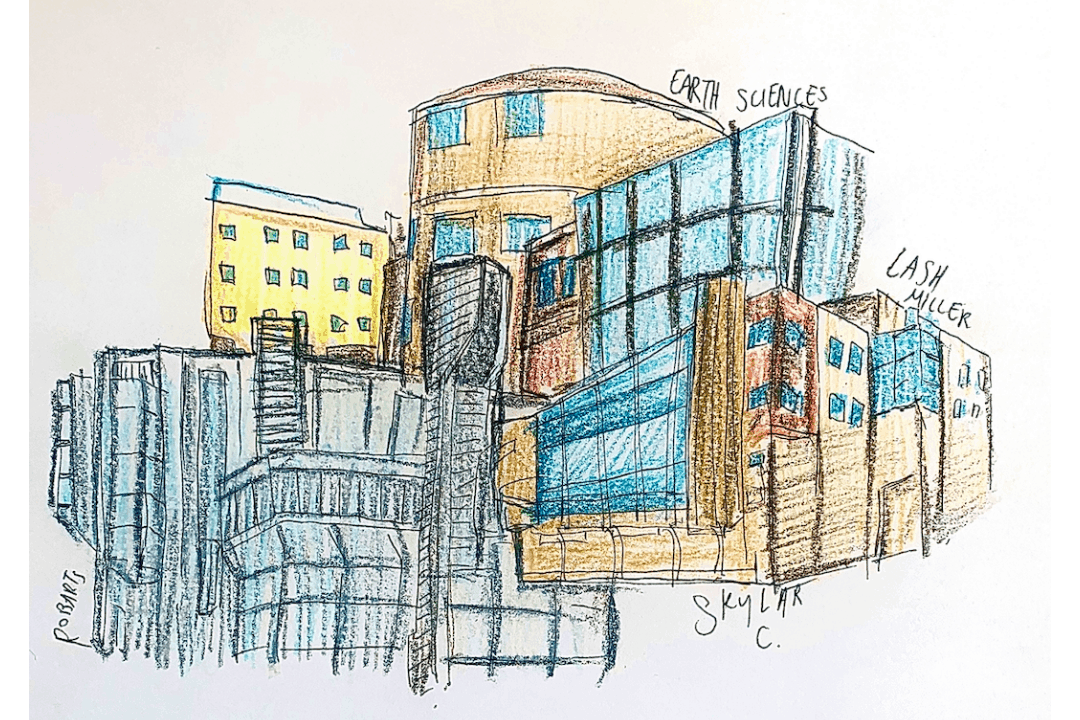U of T has a record-high facility condition index (FCI), according to a report released at the most recent Business Board meeting on February 3.
The FCI is a percentage used to denote the overall condition of a building, and at U of T, it is the highest it has been in the past 15 years. It is calculated by dividing the costs of deferred maintenance by the replacement cost of a building.
Deferred maintenance liabilities, which accrue when maintenance for buildings and infrastructure are put off, are often used as a cost-saving measure.
These liabilities take into account maintenance costs such as fire protection and repairs to roofing and electrical systems.
The combined 2019–2020 FCI for all three campuses is 15.8 per cent, which is a 0.6 per cent increase from 2018–2019.
The higher the FCI, the greater the priority of addressing the building’s issues. Generally, the higher the building’s priority, the more it costs to maintain its condition, which is often the case for some of the older buildings on campus.
For instance, the Medical Sciences Building was built in the 1960s, and it would cost around $472 million to replace it.
The Business Board noted that it would cost U of T $5.6 billion to replace all its buildings across UTSG, UTM, and UTSC.
Costs and funding sources for deferred maintenance
The FCIs for UTM and UTSC are eight per cent and 23.3 per cent, respectively. Even though the FCI for UTSC buildings is higher than that of UTSG, which has a 15.8 per cent FCI, the campus’ deferred maintenance liabilities amount to only $122 million. In comparison, deferred maintenance liabilities at UTSG are estimated at $718 million in total for administrative and academic buildings.
Of the audited buildings, Innis College has the highest FCI value reported out of all three campuses, at 64.7 per cent.
The President’s Residence, at 93 Highland Avenue, has the highest FCI, at 85.3 per cent. However, this FCI value is excluded from the current combined FCI, since it is not an administrative or academic building.
At UTM, the building with the highest FCI is Maanjiwe nendamowinan (MN), at 33.9 per cent, while Highland Hall has the highest FCI at UTSC, at 41.6 per cent.
While MN is relatively new, having opened in 2018, it has a higher FCI than the Davis Building, which was built in 1974. The Business Board’s report acknowledged that this discrepancy of newer buildings with higher FCIs is a concern and plans to further investigate it.
These liabilities do not refer to the day-to-day upkeep of buildings, but rather to the costs associated with capital renewals, which are set according to provincial standards.
The deferred maintenance liabilities reported for U of T are 30 per cent higher than the rest of Ontario’s universities and colleges, according to the Business Board.
U of T Chief Operating Officer Property Services & Sustainability Ron Saporta noted that this difference can be attributed to U of T being one of the oldest institutions in Ontario and the presence of heritage buildings on campus, which drive up deferred maintenance liabilities.
“I think the report does show where we’ve got gaps, and when we know we want to start making incremental investments,” said Saporta. “It also demonstrates a lot of significant improvements on both the level of funding on addressing issues and how we take that data and make operational and engineering improvements.”
According to Saporta, funding for deferred maintenance comes through U of T’s operating budget, which includes tuition and government grants, and capital funding from the Ontario Ministry of Colleges and Universities (MCU).
Province introduced new methods to measure FCIs
Though the 2019 FCI for U of T is the highest in 14 years, it has fluctuated before. It was at its lowest, at 8.5 per cent, in 2008, and gradually climbed to 14.3 per cent in 2012. The value started to stagnate at this point, but is climbing again.
The FCI increased from 2009–2012 as a result of a new methodology. The MCU introduced another method in 2019 which, according to the report, explains the FCI increase in 2019–2020. The latest method takes into account site infrastructure such as underground piping and landscaping.
The Business Board notes, however, that the new method will not be implemented across all sites and buildings until 2023, in accordance with the five-year audit cycle.
“The province wanted to standardize so that they can compare amongst the different sectors and… that meant that we needed to move to the provincial standard definitions,” said Saporta.
This would allow the province to compare FCIs across sectors like health care or municipal facilities.
U of T hopes to address the maintenance needs of high priority buildings, such as the Medical Sciences Building, within one year, and seek additional funding to the tune of $68 million to maintain the current FCI level.


